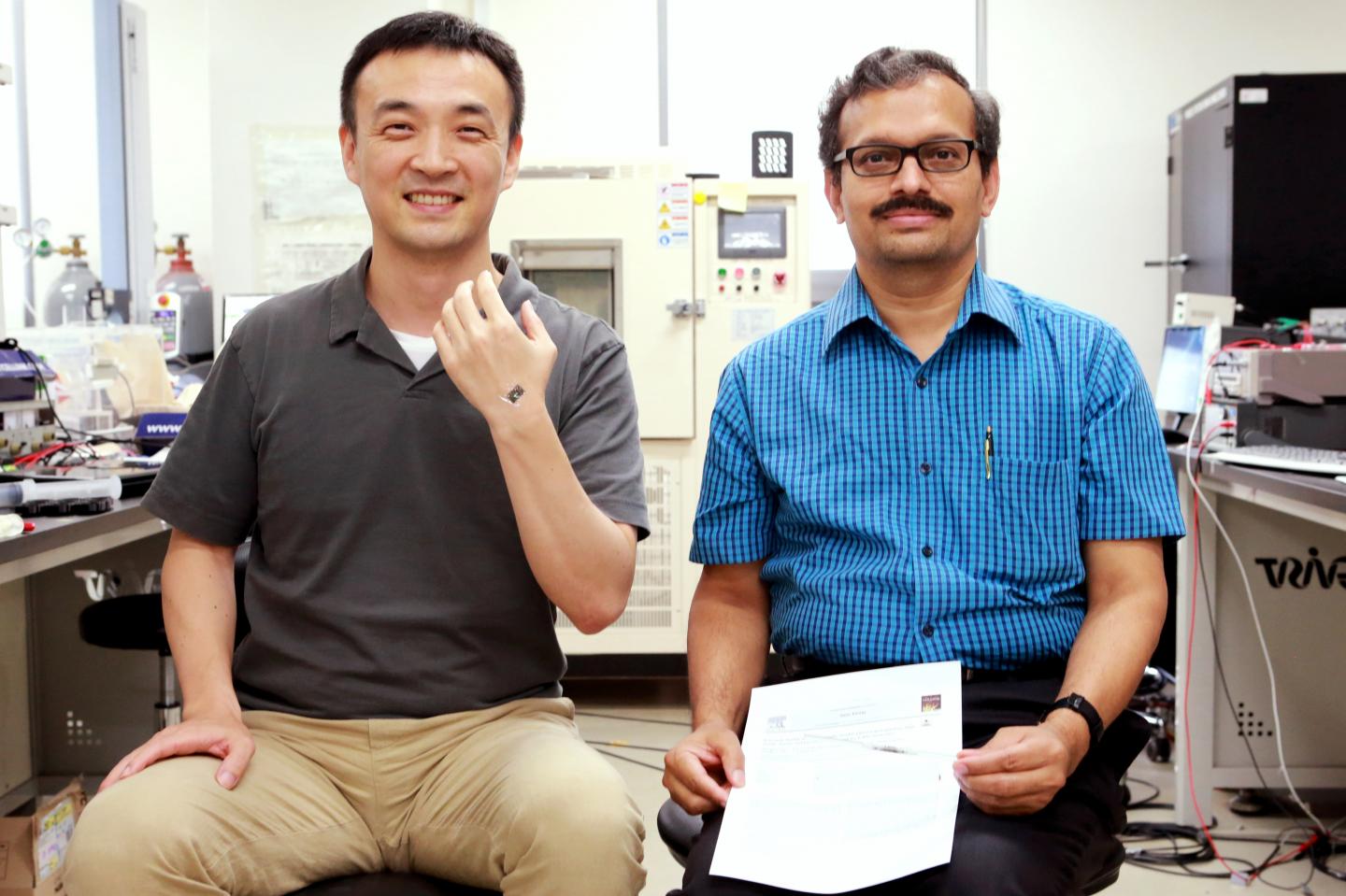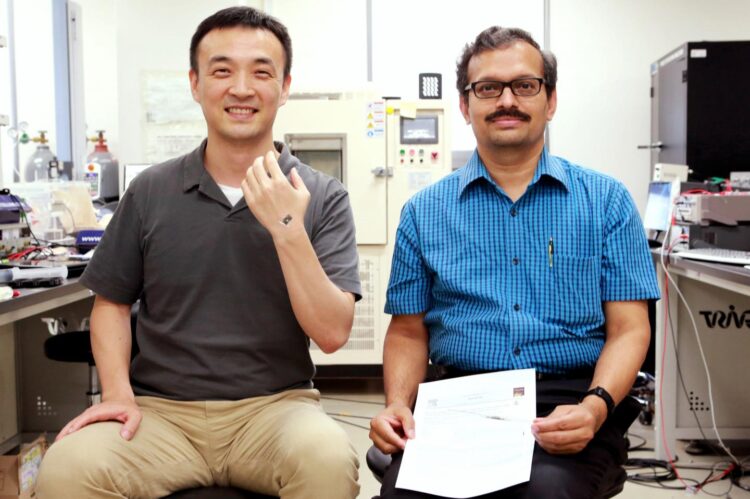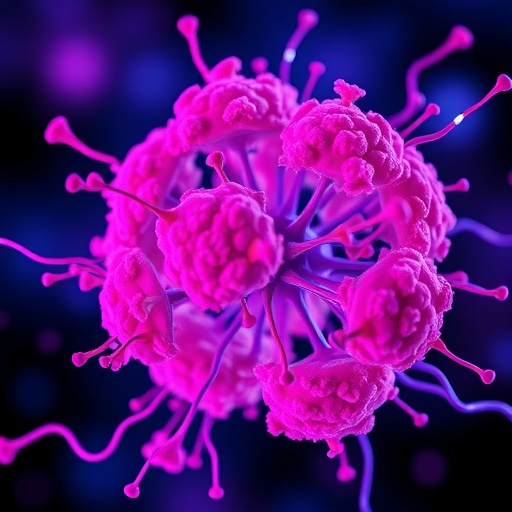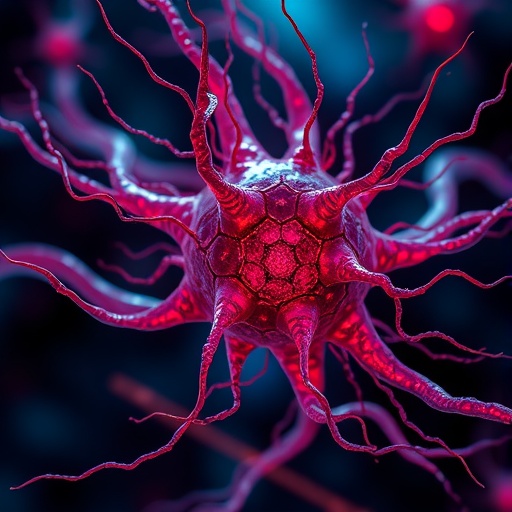The trick to extremely thin supercapacitors with improved performance is spraying graphene ink at an angle.

Credit: DGIST
Materials scientists Sungwon Lee and Koteeswara Reddy Nandanapalli at the Daegu Gyeongbuk Institute of Science & Technology (DGIST) developed the fabrication process with colleagues in Korea. A key for success is spraying a specific amount of graphene ink onto flexible substrates at a specific angle and temperature.
Lee says “Demand for remote diagnosis and wearable devices is rapidly increasing and thus, many scientists are focusing their research efforts on developing various electronic skin devices, which requires extremely tiny and flexible energy devices as a power source.”
When micro-supercapacitors are charged, positive and negative electrical charges accumulate on their electrodes and stored as energy. These devices have short charging and discharging times compared to batteries, but they can’t store as much energy.
Graphene is a promising material for improving their energy storage, as graphene electrodes are highly porous and so provide a larger surface area for the necessary electrostatic reactions to occur.
Another way to improve micro-supercapacitor performance is by fabricating electrodes with interlocking teeth, like those of two combs, increasing the amount of energy that can be stored. But this process is expensive and doesn’t work on flexible, temperature-sensitive substrates.
The obvious solution would be to spraying of graphene onto a flexible substrate, but vertical spraying leads to electrodes that aren’t very porous and that have compact layers, giving them poor performance.
Lee, Nandanapalli, and their colleagues sprayed graphene ink onto thin, flexible substrates, fabricating a paper-thin micro-supercapacitor with interlocking electrodes and excellent performance.
The trick, they explored, was to spray ten millilitres of graphene ink at a 45° angle and 80°C temperature onto a flexible substrate. This led to the formation of porous, multi-layered electrodes. The team’s micro-supercapacitor is 23 micrometres thin, ten times thinner than paper, and retains its mechanical stability after 10,000 bends. It can store around 8.4 microfarads of charge per square centimeter (2 times higher than that of the value reported today) and has a power density of about 1.13 kilowatts per kilogram (4 times higher than that of the Li-ion batteries). The team demonstrated it could be used in wearable devices that adhere to the skin.
“Our work shows that it’s possible to reduce the thickness of micro-supercapacitors for use in flexible devices, without degrading their performance,” says Lee. The team next aims to improve the micro-supercapacitors’ storage capacity and energy consumption to make it feasible for use in real-world electronic skin devices.
###
Media Contact
Kwanghoon Choi
[email protected]
Original Source
https:/
Related Journal Article
http://dx.





